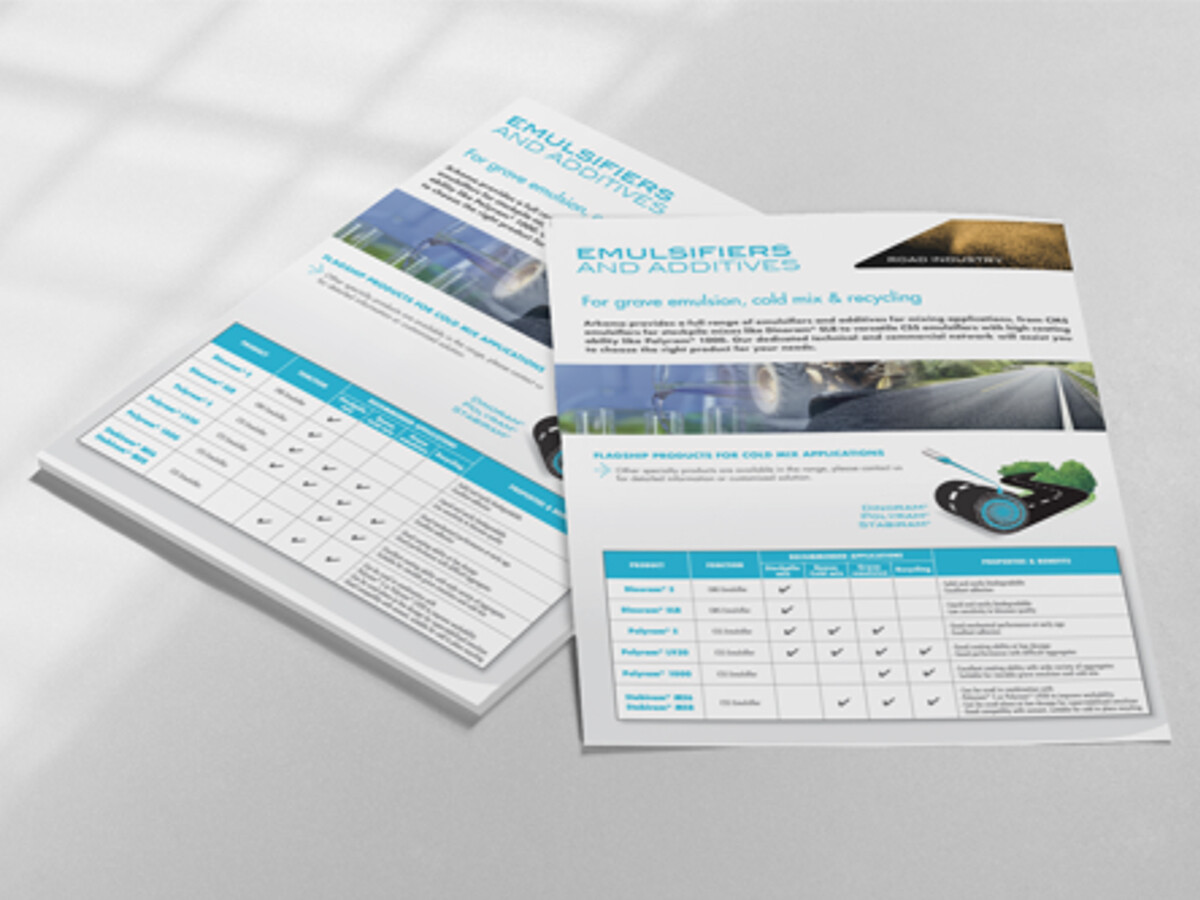Stabiram® Slow Setting Cationic Emulsifiers for Road Paving
- Africa
- Asia Pacific
- Europe
- Latin America and the Caribbean
- Middle East
- Northern America
- Oceania
Stabiram® CSS Emulsifier for Spray Grade and Mixing Grade Emulsions
Bond / Tack Coat
Stabiram® cationic bitumen emulsifiers decrease bond / tack coat drying time, thereby reducing paving downtime and returning traffic quicker, saving paving crews several hours per week which equates to hundreds of thousands in savings per paving crew per year. By preventing tack coat or bond coat from being tracked away, Stabiram® technology extends pavement life and reduces costs to remove tracked bond / tack coat and replace traffic paint, while decreasing the safety liability of reduced friction roads.
Emulsion manufacturers find tack coat or bond coat emulsions made with Stabiram® emulsifiers more convenient to produce since they use paving-grade asphalts that are easily sourced and emulsified, and can be formulated to meet typical specifications. They can be used to produce dilute and non-dilute emulsions that remain stable during extended storage and after repeated pumping cycles. Paving contractors prefer them because they become non-tracking very quickly after being sprayed, and remain stable when stored for long durations in tank trucks and storage tanks.
Prime Coat
Prime coat is an introduction of hydrocarbon binder into a previously compacted non-stabilized pavement layer. Prime coats made with Stabiram® cationic bitumen emulsifiers not only effectively stabilize the surface aggregates of the compacted layer, but also provide waterproofing, enhance cohesion and prepare the lower layer for the wearing course application.
Penetration
The penetration application is the insertion of a binder into a layer of macadam stones previously interlocked by rolling to create an adhesive film. Subsequently, aggregates are spread to fill the voids between the binder and the aggregates and are alternated with several layers of bitumen emulsion. When the penetration application incorporates the use of a bitumen emulsion enhanced with Stabiram® cationic bitumen emulsifier technology, it is highly effective in stabilizing the untreated course in new pavements, base courses as well as for renovating old pavements.
Slurry Seal and Micro Surfacing
Slurry seal and micro surfacing applications are preventive pavement maintenance and pavement preservation techniques that provide an aesthetically pleasing, skid-resistant surface to restore the pavement profile and seal the underlying pavement. They protect the pavement from further deterioration and extend the life cycle of the road.
Stabiram® cationic bitumen emulsifiers create slurry seal and micro surfacing applications that are longer-lasting, have better constructability characteristics and facilitate faster return to traffic. The Stabiram® line of cationic emulsifiers for micro surfacing and slurry seal goes beyond typical specifications to deliver the following performance advantages:
- Strong adhesion properties that result in less early construction and long-term raveling or aggregate loss.
- Increased mixing time with hot pavement and hot aggregate, allowing for paving in hot conditions without struggle.
- Easy control of chemical break allowing for fast traffic return times when paving in cooler conditions and at night.
Stabiram® cationic emulsifiers are compatible with all asphalt / bitumen types, including paraffinic and those modified with styrene-butadiene-styrene (SBS), styrene-butadiene rubber (SBR)and natural latexes. They can be formulated to perform with both reactive and unreactive aggregates of various types including granite, diabase, basalt, chert, limestone and sandstone.
Grave Emulsion
Grave emulsion is a coating technique wherein coarse aggregates are coated to a greater or lesser degree in a binder-rich mastic. In construction, the grave emulsion is used as a base course and a binder course for low to medium traffic. It can be laid using a finisher or a grader. In this case, the aggregate emulsion can be used for reprofiling, reshaping and widening.
When a grave emulsion is formulated with Stabiram® cationic bitumen emulsifiers, it provides the aggregate with greater cohesion which it naturally lacks without a binder to create a longer-lasting road.
In-Situ Recycling
Arkema’s in-situ asphalt recycling technologies, including cold-in-place recycling, full depth reclamation (FDR), granular base stabilization (GBS) and hot-in-place recycling, are engineered to deliver the highest and most reliable performance. They are different from conventional recycling techniques because they integrate exclusive Stabiram® emulsifier chemistry plus an engineered design process to meet performance-related specifications. With the integration of proprietary Stabiram® cationic emulsifiers, Arkema’s in-situ asphalt recycling technologies reduce costs by at least 25% compared to conventional construction techniques and provide environmentally friendly options for rehabilitating roads with minor to major distresses.
Benefits
- High emulsion stability
- Flexible for a large range of aggregates
- Works over a large pH range
- Effective for multiple emulsion applications
- Saves money and time in emulsion reprocessing
- Facilitates easier and faster roadway construction and maintenance
- Creates longer-lasting roads



Arkema, a Technology Leader in the Asphalt Paving Industry
